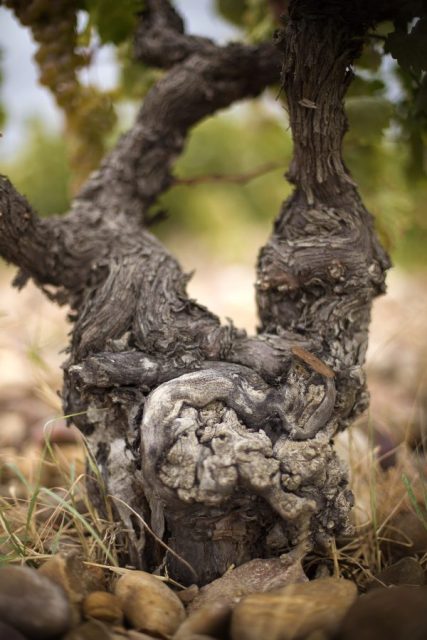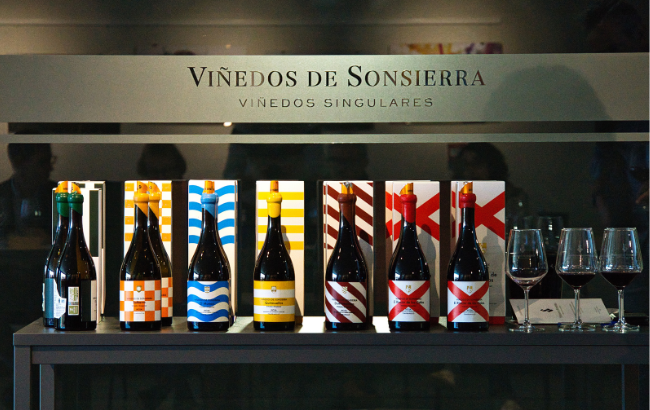Ungrafted vines prove stars of drought-struck 2022 vintage
A series of discussions with winemakers in Chile and Spain have highlighted that old, ungrafted vines have proved the most drought-resistant during recent harvests – although this depends on the grape variety.

While there are not many places in the world where vintners can grow vines without rootstocks, often called piè franco (‘free feet’), where it is possible, it is increasingly becoming a preferred solution for the quality of wine it produces, but also, in particular, such vines’ ability to root deeply and find reserves of ground water to support them during very dry years, like this one.
Almost all vineyards since the spread of grape phylloxera aphids in the late nineteenth century, which devastated the vast majority of Europe’s wine estates, have been grafted on to phylloxera-resistant American rootstocks such as Vitis riparia – a move made necessary because the European vine, Vitis vinifera, is susceptible to this root-eating pest.
However, there are places where phylloxera has not managed to get a foothold, either due to an isolated location, or the soil type – this bug doesn’t like hot, sandy soils.
Among such areas where there is no phylloxera is Toro in Spain, and South America, with the former region, as previously reported by db, containing as much as 500 hectares of ungrafted centenarian vines, some of which are as much as 200 years old, and have survived, unaffected by the phylloxera due to very low planting densities in sandy sites.
Notably, during a tasting last month, Lucas Löwi, who is the estate director at top Toro producer Numanthia, said that the old, ungrafted vines of Toro – which are planted with Tempranillo – had produced good yields of very high-quality grapes this year, when other Spanish regions that use the same variety, such as Ribera de Duero, had seen their vines suffer from drought stress, affecting productivity and berry quality.
Recording “the most extreme weather we’ve ever had” in terms of sustained heat and lack of rainfall in Toro this year, Löwi said that the old, ungrafted vines performed very well, describing it as a “miracle”.
Meanwhile, at the launch of the 2020 vintage of top Chilean Cabernet blend, Almaviva, in London last month, the brand’s winemaker, Michel Friou, also recorded the superior performance of ungrafted vines in the increasingly arid conditions of the Maipo Valley where Almaviva is based.
Commenting on precipitation trends in this part of Chile, he said that average annual rainfall levels used to be around 340mm, but have fallen to 220mm in the past decade, and in the last five years, have averaged 120mm. Due to such low quantities of rain, and a water table situated at more than 100m below the surface at the Almaviva property in Puente Alto – which is within in the high Maipo Andes area – Friou said it was necessary to irrigate the vines to keep them alive.
However, this artificial water supply is not as good as rainfall, which wets the entire soil surface, and Friou has noticed that Almaviva’s old, ungrafted vines are handling the increasingly dry conditions better than those planted on rootstocks.
While there is a core of 40 hectares of mostly Cabernet Sauvignon that was planted piè franco in 1978, the Almaviva estate has since more than doubled in size to 90ha of vineyards, with most of the newer plantings on rootstocks.
Nevertheless, Friou said at the London event, “In the last 2-3 years we have planted without rootstocks again, because we have found that the vines are more resistant to drought, and produce better results,” referring to the quality of the resulting wine.
Similarly, when db spoke to Concha y Toro’s technical director, Marcelo Papa, earlier this month in London, he said that ungrafted Cabernet Sauvignon from Puente Alto delivered a wine of unique character and high quality, encouraging him to bottle a new label using such vines, called Heritage – which you can read more about here.
While acknowledging the advantages of using rootstocks, which can be chosen not just for their resistance to phylloxera but a range of traits, he said that vines planted piè franco produce “something unique and singular”, adding that he would opt for this approach with new plantings of Cabernet in Puente Alto.
Pointing out that the benefit of ungrafted Cabernet stems from its ability to root deeply, he said that this might not be an advantage in all areas.
Partner Content
“Cabernet Sauvignon and its family of varieties, such as Cabernet Franc and Sauvignon Blanc, have a robust system of roots, and you need that in an area such as the Maipo, where its dry and the roots need to go deep to look for a stable amount of water in the soil,” he began.
Continuing he said, “This is the opposite of Bordeaux [where the water table might be located at 5-7m below the surface as opposed to more than 100m in Maipo], so you might want to choose a rootstock that roots horizontally to avoid picking up too much water.”
Finally, he schooled against an idea that all ungrafted vines rooted better and more vertically than those grafted onto rootstocks, commenting that it depends on the variety.
For instance, he said that Merlot “has a lazy root system, so that in Chile, piè franco Merlot is a disaster – it doesn’t get enough soil water and you get raisins, so Merlot is best on rootstocks.”
It’s a similar story for Chardonnay and Pinot Noir is the arid northern area of Limari, where a roostock such as 110R is favoured because piè franco equivalents of these varieties do not root vigorously enough to extract “the minerality from the soil”, said Papa, referring to the calcium carbonate found in the ground in this part of Chile – a rarity in the nation’s vineyard soils.
On the other hand, piè franco Carignan performs very well in Chile with its deep and robust rooting habit, meaning it can survive very dry conditions and still produced balanced wines.
Elsewhere, a tiny and prized parcel of ungrafted vines in the Douro are on course to very small quantities of concentrated and potentially exceptional wines for making Port from this year’s harvest, which has been one of the hottest and driest on record – rainfall levels are 70% lower than the 30-year average.
Speaking to db in August from his vineyards in the Pinhão valley, managing director at Quinta do Noval, Christian Seely, said that the well-established plots at the property would produce great wines and ports, especially, he suspected, the Nacional vineyard, which is a a piè franco planting of native Portuguese grapes used to produce the sought-after Quinta do Noval Nacional vintage Port.
For a list of wines made from ungrafted vines, grape geneticist and co-author of Wine Grapes, José Vouillamoz, has compiled a register, which can be viewed here, and which includes those made from vineyards planted before the arrival of phylloxera in Europe.
There is also an association for wines made from piè franco vines, called Francs de Pied, which was created last year, and can be joined by clicking here.

Read more
How Moët Hennessy is saving Spain’s oldest vineyards
Marques de Casa Concha puts Puente Alto centre stage with £45 Cabernet
Hot, dry, low-yielding vintage in Douro could produce exceptional Ports
Related news
Bordeaux 2024 en primeur: St-Estèphe confounds expectations




